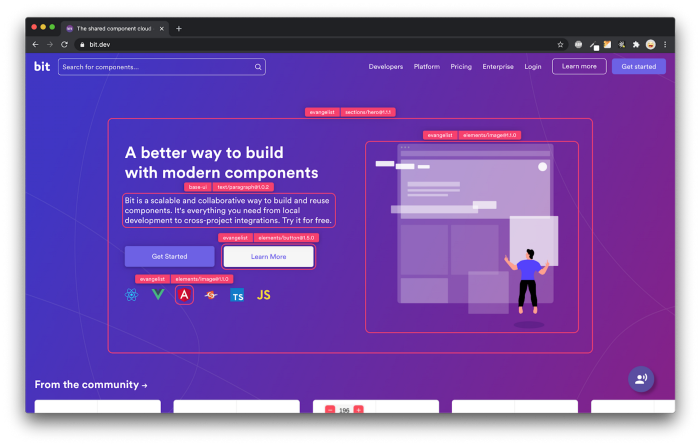This content originally appeared on Bits and Pieces - Medium and was authored by Aquib Afzal

JavaScript Promise is a powerful tool for handling asynchronous operations in web applications. It’s widely used in modern JavaScript development, and it’s important to understand how it works and how to use it in your code. In this article, we’ll explain what Promises are, how to create and use them, and provide a summary of the Promise API.
Callback is used to handle asynchronous operations before Promise.
Callback Functions in JavaScript: A Comprehensive Guide
Promise in JavaScript?
JavaScript Promise is an object that represents the eventual completion or failure of an asynchronous operation. Promises are used to handle asynchronous operations, such as fetching data from an API.
Consider a Promise is like a contract between your code and the asynchronous operation. When you make a Promise, you’re saying “I promise to do something once this operation is complete.” That something can be to display the data on a web page, to process the data further, or to handle any errors that might occur.

Promise has three states: pending, resolved, and rejected.
- Pending: The initial state of a Promise. The Promise is neither fulfilled nor rejected.
- Resolved: The state of a Promise when the asynchronous operation is successfully completed.
- Rejected: The state of a Promise when the asynchronous operation fails.
Benefits of using Promise:

- Cleaner code: Promises can simplify code that involves multiple asynchronous operations, such as fetching data from multiple APIs.
- Improved error handling: Promises make it easier to handle errors that occur during asynchronous operations. Instead of using nested callbacks to handle errors, you can use the catch method to handle errors in a more concise and readable way.
- Better performance: Promises can improve the performance of your code by allowing asynchronous operations to be executed in parallel, instead of blocking the execution of the rest of your code.
- Easy debugging: Promises make it easier to debug asynchronous code by providing more predictable and consistent error handling. Promises also make it easier to trace the flow of data through your application.
Creating a Promise:

To create a Promise, we use the Promise constructor function, which takes a single argument, a function that defines the asynchronous operation. The function takes two parameters, resolve and reject, which are functions that can be called to either resolve or reject the Promise.
const myPromise = new Promise((resolve, reject) => {
// Define your asynchronous operation here
// Call resolve() when the operation is successful
// Call reject() when the operation fails
});Using Promise:
Once we’ve created a Promise, we can use it to handle asynchronous operations. We do this using the then method, which is called when the Promise is resolved.
myPromise.then(result => {
// Handle the resolved Promise here
}).catch(error => {
// Handle the rejected Promise here
});Example of creating and using a Promise:

const myPromiseNumber = new Promise((resolve, reject) => {
setTimeout(() => {
const randomNumber = Math.floor(Math.random() * 10);
if (randomNumber < 5) {
resolve(randomNumber);
} else {
reject(new Error('Number too high'));
}
}, 1000);
});
// Usage
myPromiseNumber
.then((result) => {
console.log('Task completed successfully:', result);
})
.catch((error) => {
console.log('Task failed with error:', error.message);
});
In this example, the myPromiseNumber is a new Promise that performs an asynchronous task of generating a random number between 0 and 9 after a one-second delay. If the generated number is less than 5, the Promise resolves with the number, and if it's greater than or equal to 5, the Promise rejects with an error message.
The Promise is used by chaining the then and catch methods to it. If the Promise resolves successfully, the then method is called with the generated number, and if the Promise rejects with an error, the catch method is called with the error message. This allows you to handle the result of the Promise in a readable and expressive way, and to handle any errors that might occur during the asynchronous task.
The Promise API:

The Promise API provides several methods that you can use to interact with Promises:
- Promise.all(iterable): This method takes an iterable of Promises as an input and returns a new Promise that resolves to an array of the results of all the input Promises, in the same order as the input Promises. If any of the input Promises reject, the entire Promise.all() will reject immediately.
- Promise.allSettled(iterable): This method takes an iterable of Promises as an input and returns a new Promise that resolves to an array of objects that describe the outcome of each input Promise. The objects in the array have a status property that is either "fulfilled" or "rejected", and a value or reason property that contains the result or error of each Promise, respectively.
- Promise.any(iterable): This method takes an iterable of Promises as an input and returns a new Promise that resolves as soon as any of the input Promises resolves, with the value of the first resolved Promise. If all of the input Promises reject, then the returned Promise rejects with an AggregateError containing all of the rejection reasons.
- Promise.race(iterable): This method takes an iterable of Promises as an input and returns a new Promise that resolves or rejects as soon as any of the input Promises resolve or reject.
- Promise.resolve(value): This method returns a new Promise that is resolved with the given value.
- Promise.reject(reason): This method returns a new Promise that is rejected with the given reason.
In Conclusion, JavaScript Promise is a powerful tool for handling asynchronous operations in web applications. By understanding how Promises work and using them in your code, you can create more efficient and reliable applications.
Some Quick Links
LocalStorage | Redis Caching | Node.js Cluster | Array Methods | Callback Function
Contact Me
Build Node.js Apps with reusable components

Bit’s open-source tool help 250,000+ devs to build apps with components.
Turn any UI, feature, or page into a reusable component — and share it across your applications. It’s easier to collaborate and build faster.
Split apps into components to make app development easier, and enjoy the best experience for the workflows you want:
→ Micro-Frontends
→ Design System
→ Code-Sharing and reuse
→ Monorepo
Learn more
- How We Build Micro Frontends
- How we Build a Component Design System
- Bit - Component driven development
- 5 Ways to Build a React Monorepo
- How to Create a Composable React App with Bit
JavaScript Promise: A Beginner’s Guide to Asynchronous Operations was originally published in Bits and Pieces on Medium, where people are continuing the conversation by highlighting and responding to this story.
This content originally appeared on Bits and Pieces - Medium and was authored by Aquib Afzal
Aquib Afzal | Sciencx (2023-02-21T11:23:22+00:00) JavaScript Promise: A Beginner’s Guide to Asynchronous Operations. Retrieved from https://www.scien.cx/2023/02/21/javascript-promise-a-beginners-guide-to-asynchronous-operations/
Please log in to upload a file.
There are no updates yet.
Click the Upload button above to add an update.
